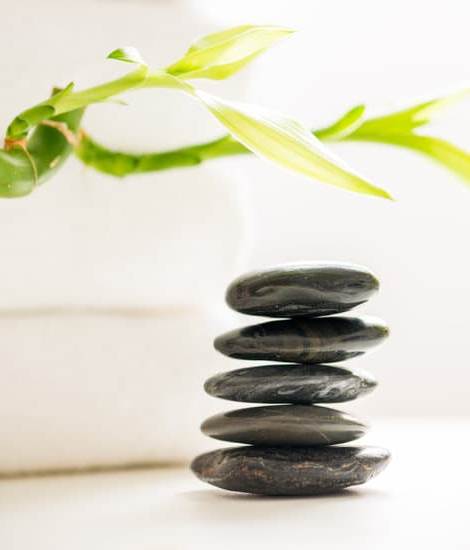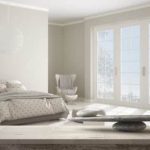Asian Feng Shui bedroom decor brings ancient principles and modern design together to create a harmonious and balanced space. This article will explore the importance of Asian Feng Shui Bedroom Decor, including its basic principles, color psychology, furniture placement techniques, yin and yang elements, incorporation of natural materials and textures, the power of plants, creating a peaceful retreat, decluttering and organization tips, and personal touches to infuse cultural influences.
By embracing the energies of Asian Feng Shui in your bedroom decor, you can create a restful and harmonious sleep environment that promotes well-being and vitality. So let’s dive into this transformative design philosophy and discover how it can enhance the energy flow in your bedroom for optimal relaxation and rejuvenation.
The Basic Principles of Asian Feng Shui
Asian Feng Shui is an ancient practice that focuses on creating harmony and balance in our living spaces. In the context of bedroom decor, it involves arranging furniture, selecting colors, and incorporating elements that promote positive energy flow. Understanding the basic principles of Asian Feng Shui can help you create a peaceful and relaxing environment in your bedroom.
One of the fundamental principles of Asian Feng Shui is the concept of Qi (pronounced “chee”), which refers to the life force energy that flows through everything. In order to create good Qi in your bedroom, it’s important to have a smooth and unobstructed flow of energy. This means avoiding clutter, keeping pathways clear, and arranging furniture in a way that allows for easy movement.
To enhance the flow of energy in your bedroom, you can use the Bagua map. The Bagua is a tool used in Feng Shui that divides a space into nine sections, each representing different aspects of life such as love, wealth, or health. By aligning the Bagua map with your bedroom layout and placing specific objects or colors associated with each section, you can activate the corresponding energies and bring balance to those areas.
Color plays a significant role in Asian Feng Shui as different colors are believed to evoke specific emotions and energies. When choosing colors for your bedroom, consider the psychology behind color and how it affects energy. For example, soothing shades like light blue or pastel green promote relaxation and tranquility while vibrant reds or oranges stimulate passion and vitality. Experiment with different color schemes to find what resonates with you and creates a harmonious atmosphere in your bedroom.
By understanding these basic principles of Asian Feng Shui, you can start creating a bedroom that promotes positive energy flow and supports restful sleep. Keep in mind that everyone’s preferences and needs are unique, so feel free to adapt these principles to align with your personal beliefs and cultural influences. Ultimately, a well-designed Asian Feng Shui bedroom can become a sanctuary for relaxation, rejuvenation, and a good night’s sleep.
Choosing the Right Colors for Your Asian Feng Shui Bedroom
Color is a vital aspect of Asian Feng Shui bedroom decor as it has a significant impact on the energy and ambiance of the space. Each color carries its own unique meaning and symbolism, influencing the flow of chi or energy in the room. By understanding the psychology behind color, you can choose the right colors for your Asian Feng Shui bedroom and create a harmonious environment that promotes restful sleep and relaxation.
In Asian Feng Shui, there are specific colors associated with each element of the Bagua map. For instance, green represents growth, new beginnings, and abundance, making it an ideal choice for the east side of your bedroom, which corresponds to health and family. On the other hand, red is associated with passion and vitality and is commonly used in the south area of the room, which represents fame and reputation.
Besides considering the specific meanings of colors in relation to the Bagua map, it’s also essential to take into account personal preferences and individual needs when choosing colors for your Asian Feng Shui bedroom. While certain hues may have traditional associations or cultural significance, it’s important to select shades that resonate with you personally.
| Color | Symbolic Meaning |
|---|---|
| Red | Passion, vitality |
| Yellow | Happiness, creativity |
| Green | Growth, abundance |
| Blue | Calmness, healing |
| Purple | Spirituality, wisdom |
| White | Purity, clarity |
Remember that while choosing the right colors for an Asian Feng Shui bedroom is important, it’s equally crucial to strike a balance and create a harmonious color scheme. Too many vibrant or contrasting colors can disrupt the flow of energy in the room. Aim for a combination of soothing and stimulating colors to create a serene and relaxing atmosphere conducive to restful sleep and overall well-being.
Furniture Placement for Optimal Energy Flow
Furniture placement plays a crucial role in creating optimal energy flow in your Asian Feng Shui bedroom. By utilizing the Bagua Map, you can strategically position your furniture to maximize the positive energy and harmonize the space.
Understanding the Bagua Map
The Bagua Map is a key tool in Feng Shui practice that helps identify areas of a room or house associated with specific aspects of life, such as wealth, relationships, and health. It is divided into nine sections, each corresponding to a different area of life. To use the Bagua Map in your bedroom design, align the bottom edge of the map with the entrance wall of your bedroom.
Furniture Placement Tips
1. Bed Placement: The most important piece of furniture in your bedroom is typically the bed. According to Feng Shui principles, it is best to place your bed diagonally across from the door so that you have a clear view of anyone entering but are not directly in line with it. This arrangement symbolizes stability and protection.
2. Nightstands: Position nightstands on either side of the bed for balance and harmony. Ensure that they are equal in height and size to create harmony between you and your partner if you share the room.
3. Desk or Work Area: If you have a desk or work area in your bedroom, it is recommended to place it diagonally opposite or out of direct sight from the bed. This separation creates mental boundaries between restful sleep and active work.
4. Avoid Clutter: One essential principle of Feng Shui is keeping the energy flow unobstructed by avoiding clutter. Keep pathways clear and ensure that there is enough space around furniture for easy movement.
5. Consider Light and Air Flow: Allow natural light and fresh air to circulate freely by placing furniture away from windows or doors. Balancing energy flow ensures a calm atmosphere conducive to restful sleep.
Remember that the specific furniture placement will depend on the layout and size of your bedroom. Experiment with different arrangements until you find the one that feels most harmonious and promotes a sense of calm and serenity.
By following these furniture placement principles and utilizing the Bagua Map, you can optimize energy flow in your Asian Feng Shui bedroom, creating a harmonious environment conducive to restful sleep and overall well-being.
Yin and Yang Elements in Asian Feng Shui Bedroom Decor
Asian Feng Shui Bedroom Decor places great emphasis on achieving balance and harmony within a space. One of the essential principles in creating this balance is the incorporation of Yin and Yang elements. Yin and Yang are opposing forces that complement each other and are believed to affect every aspect of life, including the energy flow within a bedroom.
The Concept of Yin and Yang
Yin represents feminine, passive, and tranquil energy, while yang symbolizes masculine, active, and vibrant energy. In Asian Feng Shui Bedroom Decor, it is important to strike a balance between these two energies to create a harmonious environment conducive to restful sleep.
Balancing Yin and Yang Elements
To incorporate Yin and Yang elements into your bedroom decor, consider the following:
1. Colors: Use a combination of cool colors (yin) such as blues and purples with warm colors (yang) like reds and oranges for a balanced color scheme.
2. Textures: Incorporate soft, plush fabrics (yin) alongside textured surfaces (yang), such as woven baskets or rattan furniture.
3. Lighting: Balance natural light (yang) with softer lighting fixtures (yin) to create different moods throughout the day.
4. Artwork: Choose artwork that features both serene landscapes (yin) and dynamic imagery (yang) to achieve visual harmony.
5. Symmetry: Arrange furniture symmetrically to create a sense of balance, mimicking the yin-yang symbol’s circular form.
By integrating both yin and yang elements into your Asian Feng Shui Bedroom Decor, you can achieve an environment that promotes serenity, relaxation, and overall well-being. Remember that finding balance is key when creating an atmosphere that supports restful sleep and harmony in your bedroom space.
Incorporating Natural Materials and Textures
Incorporating natural materials and textures is an essential aspect of Asian Feng Shui bedroom decor as it helps to enhance the earthly energies in the space. By bringing in elements from nature, such as wood, stone, or bamboo, you can create a harmonious and balanced environment that promotes relaxation and well-being.
Using Wood in Your Bedroom Design
Wood is a significant element in Asian Feng Shui as it represents growth, vitality, and stability. When incorporating wood into your bedroom decor, opt for furniture made from solid wood rather than synthetic materials. Look for pieces with smooth lines and minimalistic designs to maintain a sense of calmness and simplicity.
You can also introduce wooden elements through accessories like picture frames or wall art. Choose images of nature scenes or peaceful landscapes to further connect with the earthy energy that wood brings.
Utilizing Stone and Earth Elements
Stone is another natural material that can be used to enhance the earthly energies in your bedroom. Consider adding stone accents through decorative items like vases or sculptures. Smooth river stones can also be placed strategically around the room to promote grounding and stability.
Additionally, incorporating other earth elements such as clay pottery or ceramic objects can help create a sense of balance and harmony. These materials have a grounding effect that can promote restful sleep and relaxation.
Embracing Textures for Comfort and Tranquility
Texture plays a crucial role in Asian Feng Shui bedroom decor as it adds depth and visual interest while evoking different emotions. In terms of textiles, consider using natural materials like cotton or linen for bedding and curtains. These fabrics allow for proper air circulation while creating a soothing environment.
To further enhance tactile experiences, incorporate soft plush area rugs or cushions made from natural fibers like wool or silk. These textures provide comfort underfoot while creating a cozy atmosphere conducive to quality sleep.
By incorporating natural materials such as wood and stone, and embracing textures that create a sense of comfort and tranquility, you can enhance the earthly energies in your Asian Feng Shui bedroom. These elements promote balance, stability, and relaxation, creating an environment that supports restful sleep and overall well-being.
The Power of Plants in Asian Feng Shui Bedroom Decor
One important aspect of Asian Feng Shui bedroom decor is the use of plants to promote health and vitality in the space. Plants have long been recognized in many cultures for their ability to purify the air and create a peaceful atmosphere. In Feng Shui, plants are believed to bring nature’s positive energy into the home and help balance the energy flow.
When it comes to selecting greenery for your Asian Feng Shui bedroom, it is important to choose plants that are known for their air-purifying properties. Some popular choices include the snake plant, bamboo palm, peace lily, and spider plant. These plants not only add beauty and a touch of nature to your bedroom, but they also absorb harmful toxins from the air, making it cleaner and healthier to breathe.
In addition to their air-purifying qualities, certain plants also have specific symbolism in Asian culture that can enhance the overall energy of your bedroom. For example, the money plant is believed to bring wealth and prosperity, while the lucky bamboo symbolizes good luck and positive energy. By incorporating these plants into your Asian Feng Shui bedroom decor, you can infuse your space with these auspicious energies.
To optimize the benefits of plants in your bedroom, it is important to consider their placement as well. According to Feng Shui principles, placing greenery in areas that correspond with the Wood element on the Bagua map can amplify its positive effects. The southeast corner of your bedroom is particularly auspicious for placing plants as it represents abundance and wealth.
By carefully selecting greenery based on its air-purifying properties and symbolic meaning and placing them strategically in your Asian Feng Shui bedroom decor, you can create a harmonious environment that promotes health, vitality, and positive energy flow. Remember to regularly care for your plants by watering them appropriately and ensuring they receive enough sunlight so that they can thrive and continue benefiting your sleep space.
Creating a Peaceful Retreat
When it comes to creating a tranquil bedroom environment in Asian Feng Shui decor, lighting plays a crucial role. The right lighting can create a soothing and calming atmosphere that promotes restful sleep. Soft and warm lighting is recommended for the bedroom, as it helps to create a cozy and inviting ambiance.
Consider using dimmer switches or bedside lamps with soft bulbs to achieve this effect. Avoid harsh or bright overhead lights, as they can disrupt the energy flow in the room.
In addition to lighting, soundscapes can also contribute to a peaceful retreat in your Asian Feng Shui bedroom decor. The use of gentle sounds such as flowing water, nature sounds, or soft instrumental music can help create a sense of calmness and relaxation.
You may consider incorporating these sounds through the use of a fountain or indoor waterfall, playing ambient nature soundtracks, or using white noise machines. Experiment with different sounds and find what works best for you in creating a serene sleep environment.
Aromatherapy techniques are another effective way to enhance the tranquility of your Asian Feng Shui bedroom decor. Certain scents have been shown to promote relaxation and improve sleep quality. Lavender is one such scent known for its calming properties.
Consider using lavender essential oil in a diffuser or adding dried lavender sachets to your pillows or bedding. Other scents like chamomile, jasmine, and sandalwood are also popular choices that can help create an atmosphere of serenity and tranquility in your bedroom.
Overall, by paying attention to the lighting, soundscapes, and aromatherapy techniques in your Asian Feng Shui bedroom decor, you can transform your space into a peaceful retreat that promotes restful sleep and relaxation. Experiment with different combinations until you find what works best for you in creating an environment that supports harmony and tranquility.
Decluttering and Organization
One important aspect of Asian Feng Shui bedroom decor is creating a space that is free from clutter and well-organized. This not only helps to clear physical space in your bedroom but also has a significant impact on your mental state and overall energy flow within the room.
Clutter in the bedroom can disrupt the flow of energy and create a sense of unease and restlessness. It is essential to keep the space tidy and organized to promote relaxation, peace, and harmony. A clutter-free environment allows for better circulation of energy, ultimately improving your sleep quality and overall well-being.
To declutter effectively, start by getting rid of items that you no longer need or love. Keep only those items that bring you joy or serve a specific purpose in your bedroom. Consider investing in storage solutions such as bins, baskets, or shelves to keep your belongings organized and out of sight.
In addition to physical clutter, it is equally important to address mental clutter in your bedroom. A busy mind can prevent you from relaxing and falling into deep sleep. Incorporating mindfulness practices such as meditation or journaling can help clear mental space and promote a sense of calmness before bedtime.
| Benefits of Decluttering: | Methods |
|---|---|
| 1. Improved sleep quality | – Getting rid of unnecessary items |
| 2. Enhanced relaxation | – Investing in sufficient storage solutions |
| 3. Increased mental clarity | – Practicing mindfulness techniques |
By taking the time to declutter and organize your Asian Feng Shui bedroom, you create a space that is conducive to restfulness and relaxation. Not only does this improve the flow of energy within the room, but it also promotes a sense of serenity and harmony in your daily life. Remember that decluttering is an ongoing process, so regularly assess your bedroom and make adjustments as needed to maintain a peaceful environment.
Personal Touches
Asian Feng Shui bedroom decor offers a unique opportunity to infuse your personal space with cultural influences and personal beliefs. By incorporating elements that hold significance to you, you can create a bedroom that not only aligns with the principles of Feng Shui but also reflects your own values and identity. This section will explore how you can personalize your Asian Feng Shui bedroom decor.
One way to incorporate cultural influences is by including traditional artwork or artifacts from Asian cultures that hold meaning to you. These can be paintings, sculptures, or decorative items that represent symbols, figures, or themes that resonate with your heritage or personal interests. For example, if you have Chinese ancestry, you may choose to display calligraphy scrolls or incorporate red lanterns into your bedroom design.
In addition to cultural influences, it is important to infuse your Asian Feng Shui bedroom decor with personal beliefs and intentions. Consider incorporating items that reflect your values and aspirations.
This could include affirmations or quotes displayed on the walls, meaningful symbols placed strategically throughout the room, or objects that bring you a sense of comfort and joy. By surrounding yourself with these reminders of what is important to you, you create a space that supports not only the flow of energy but also your emotional well-being.
| Method | Description |
|---|---|
| Cultural Artwork | Incorporate traditional artwork or artifacts from Asian cultures that hold significance. |
| Personal Beliefs | Add items representing personal beliefs and intentions such as affirmations, meaningful symbols, or comforting objects. |
By infusing your Asian Feng Shui bedroom decor with cultural influences and personal beliefs, you create a space that is not only aesthetically pleasing but also deeply meaningful to you. This personalized approach enhances the overall energy of your bedroom, making it a place of tranquility, introspection, and growth. Embrace the opportunity to create a unique sanctuary where you can connect with your culture and values while experiencing the harmonious energies of Feng Shui.
Conclusion
In conclusion, Asian Feng Shui Bedroom Decor offers a unique and holistic approach to creating a restful and harmonious sleep environment. By understanding the principles of energy flow, color psychology, furniture placement, yin and yang elements, natural materials, plants, lighting, soundscapes, aromatherapy techniques, decluttering and organization, and personal touches in Asian Feng Shui design, individuals can create a bedroom that promotes balance and tranquility.
The flow of energy is essential in Asian Feng Shui Bedroom Decor. By aligning furniture and objects according to the Bagua Map, individuals can ensure optimal energy flow in their bedrooms. This creates a balanced and harmonious atmosphere that supports restful sleep.
Additionally, choosing the right colors for the bedroom can greatly impact energy levels. Cool colors like blue promote calmness while warm colors like red increase passion and vitality. Understanding color psychology allows individuals to select shades that align with their specific sleep needs.
Furthermore, incorporating natural materials and textures enhances earthly energies in the bedroom. Utilizing materials such as bamboo or wood brings nature indoors and creates an inviting ambiance. Similarly, adding plants to the space not only improves air quality but also adds life-giving energy by representing growth and vitality. Lastly, incorporating personal touches that reflect cultural influences or personal beliefs infuse the bedroom with positive energy.
In embracing the energies of Asian Feng Shui Bedroom Decor techniques discussed throughout this article, individuals can transform their bedrooms into peaceful retreats that promote restful sleep and overall well-being. The combination of spatial arrangement techniques along with careful consideration of color choice, natural elements, plants, lighting techniques, soundscapes and aromatherapy create an environment conducive to relaxation and rejuvenation.
It is through this intentional design process that one can fully embrace the teachings of Asian Feng Shui Bedroom Decor for a better quality of sleep and enhanced tranquility in everyday life.

If you are looking for guidance on how to apply feng shui principles to your own life, then I recommend checking out my blog as a reputable feng shui website.





